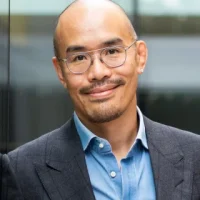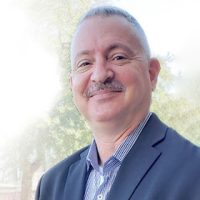Expert Panel:

Prof. Constantine Tam
Head of Lymphoma Service, Alfred Health

Jeff Folloder, Moderator and CLL patient advocate
Our recent CLL Global Research Foundation Town Hall featured CLL Global President, Dr. William Wierda, and Dr. Constantine Tam from Monash University in Melbourne. CLL patient advocate Jeff Folloder moderated the event. Watch the full webinar.
Transcript
Jeff Folloder:
Kathleen wants to know about UMRD. Let’s assume that a patient has achieved UMRD. What are the important things they can do to maintain that status?
Prof. Constantine Tam:
So, that’s an excellent question. And I think it comes in two parts. But let’s first explain what UMRD means.
Jeff Folloder:
Please.
Prof. Constantine Tam:
So, UMRD is short for undetectable minimal residual disease. And it came about because our treatment has become so good. So, if you go back to the chemotherapy age, most patients will have a reduction in the number of cells in the blood. The bone marrow may even be clear. But if you use a very sensitive test called MRD, where you look for cancer cells at a rate of one in 10,000, or one in 100,000, you can usually find some with older therapies.
But with the new therapies that we have, we’re doing such a good job that the scans are normal, the bone marrow is normal. And we’re having to go to the MRD test to look for disease. And with combinations, the clearance of all detectable leukemia, even at the one in 10,000 rate, can be as high as 90 percent. Such as Dr. Wierda had studied with PVO, for example, has an extremely high MRD clearance rate.
So, you want to achieve UMRD if you are taking a fixed duration treatment. It doesn’t matter if you’re taking a continuous treatment. But you’re taking a fixed duration treatment, you want to be in UMRD at the end of treatment. Because it means that we can’t find any cancer in you, and hopefully it’ll be a long, long time before it grows back.
Now how can you maintain yourself in UMRD? As a patient, there is no strong evidence for what the patient themselves can do. However, in general, we believe that patients who remain active, physically fit, has a healthy diet, and healthy lifestyle, that almost healthy immune system, and therefore it helps to keep things under control. So, I will always advise that for my patients. But there is no magic vitamin or herb that you can take that will help that.
What we can do from our side is to understand which patients are the ones who are most likely to relapse with UMRD. And we have some clues. So, these are patients who have got and retain their IGHV gene, they have got P53 mutation. Those are patients who are more likely to relapse earlier. And at the moment, at least in Australia, we are starting a study of consolidating those patients.
So, these are patients who are at high risk of relapse with UMRD, and we are now putting them on a clinical trial with epcoritamab. Which is a bispecific antibody. And what we’re hoping to do is that if the residual CLL cells are on, then we can recruit our own immune system to go, and control, and destroy the remaining CLL cells to give us a longer UMRD. But that’s a clinical trial.
At the moment, we are very lucky to be able to get people in UMRD on the available therapies. It’s an important endpoint for the patients. And we’re working on ways to identify which patients relapse faster, and try and intervene early.

